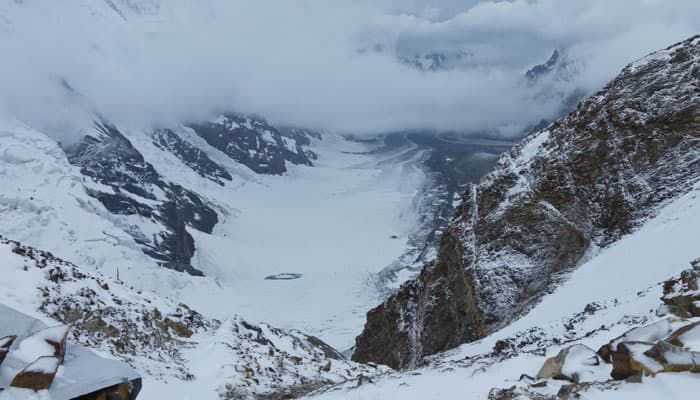Zee Media Bureau
New Delhi: After years of remaining a subject of mystery the reason behind the Kararoram glaciers' stability has finally been revealed.
Glaciers of the Himalaya's Karakoram region, spanning the borders between India, Pakistan and China have exhibited mass stability or even expansion in the Karakoram region contrasting the glacial mass loss across the nearby Himalayas and Tibetan Plateau, a pattern that has been termed the Karakoram anomaly.
"It has been a source of controversy that these glaciers have not been changing while other glaciers in the world have," said Sarah Kapnick, a postdoctoral researcher at the Princeton University.
For the study, the researchers collected data on recent precipitation and temperatures from the Pakistan Meteorological Department and other sources, including satellite data.
They compared a set of high-resolution climate model simulations from 1861 to 2100 to focus on the distinct seasonal cycles and resulting climate change signatures in three regions of the Himalayas: the Karakoram, the central Himalayas and the south-east Himalayas which included parts of the Tibetan Plateau.
Researchers found that a new model that simulates climate down to an area of 19 square miles (50 square kilometres) was able to match the observed temperature and precipitation cycles seen in the Karakoram region.
As the globe warms, precipitation increases across the Himalayas. Because of the Karakoram region's geography, it gets most of this extra moisture in winters, when westerly winds bring snow to the mountains.
In contrast, the central and south-east Himalayan regions get most of their moisture from monsoons in the summers. Because summer is warmer, most of this precipitation falls as rain.
Previous models overestimated the temperature of the Karakoram, and underestimated the amount of snow in the region, the researchers found.
"The total amount of water that is falling from the sky is increasing during the summer months. But since the temperatures are rising above freezing, they're not transforming to increased snowfall; they're actually transforming to decreased snowfall in those two regions," said Kapnick.
"In Karakoram, snowfall is decreasing in summer and increasing in winters," Kapnick pointed out.
Though the researchers did not test the idea, this snow presumably feeds Karakoram's glaciers, keeping them from retreating, Live Science reported.
The study appeared in the journal Nature Geoscience.
With Agency Inputs
















